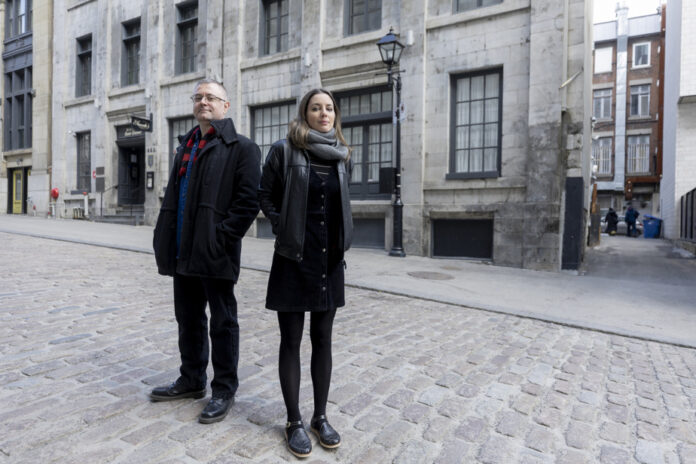“Are you the type of person who wonders what the hell happened in a place they are visiting or viewing from the outside? If you answer yes to Annie Richard and Jean-Philippe Rousseau’s question, then you’ll be diving with delight into their new book Mystery Motel — Disturbing Stories for Reckless Guests.
You will learn, among so many other equally tasty stories, that the members of the famous band The Who spent eight hours in a Montreal prison cell in 1973 for ransacking a room at the Hotel Bonaventure, after be produced at the Forum. Or that in 1933, a liquor smuggler from Newfoundland was arrested at the notorious Château Frontenac in Quebec, where he was hiding to evade authorities.
“Hotels are places of passage, a bit like train stations, airports… We spend a few nights there and then forget about them. But when you dig, with the passage that there is in a hotel, it is sure that you will find dramas, things a little unusual, atypical, “said Jean-Philippe Rousseau, who co-hosts the podcast Retro Crimes with Annie Richard.
“We become more anonymous when we are passing through a hotel”, underlines for her part the one who is also a private detective at the helm of the program Sur ta rue (on Canal D). “So for sure it’s ideal to become the perfect bandit hideout or hideout for a night.” »
These miscellaneous facts all made headlines at the time and have since fallen into oblivion; nevertheless, they are no less crispy even today. And even if some of the establishments whose incredible stories are told no longer exist or have changed their names – such as the mythical Hotel Rocdor in Drummondville or the Hotel de La Salle in Montreal, which was located in the middle of the gangster district in the 1940s — the places still conceal the traces of their passage.
On Rue Saint-Vincent in Old Montreal, a plaque recalls that the building, built in 1861 and now home to the small boutique hotel Maison Saint-Vincent, was once the Hôtel Richelieu — subject of a top chapter in color in the book.
“It was a neighborhood that could be rough,” says Annie Richard. “It’s the port with a lot of workers, sailors who stopped there,” adds Jean-Philippe Rousseau. It was a hotel — we would say “classy” today — where there were a lot of personalities. »
It is indeed at the Hotel Richelieu that Sarah Bernhardt stayed during her American tour in 1880, we learn. “Afterwards, it was a bit of an upscale restaurant,” says Annie Richard. Then, from 1902 to 1968, the premises were occupied by the Forensic Institute and the morgue. “It’s a century later that it becomes a hotel establishment again,” says the author.
This little trip to the past also shows that in recent decades, establishments that were very fashionable at one time have lost some of their luster after being at the heart of many criminal stories.
“The Motel Raphaël [in the Notre-Dame-de-Grâce district] was truly a vacation spot; there were even honeymoons, conferences, many Americans who came to stay there. But I saw the last photos before the destruction… it really wasn’t pretty,” notes Jean-Philippe Rousseau.
Others, like Motel Pierre in the borough of Saint-Laurent, continue to make headlines. “That too is another place that has changed over time,” he adds. Before, there was the Cartierville airport, opposite, and the Bobino, which was like a cabaret place; it was travellers, tourists, businessmen who were there. »
“Old buildings exude history. But the hotels, you don’t see them anymore; it’s part of our landscape, we see them more as architecture,” says Jean-Philippe Rousseau. And yet, the stories they contain have not finished being told.








